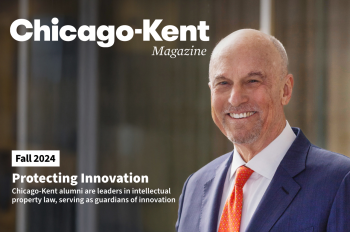BRIDGE DESTRUCTION YIELDS MOST EFFICIENT STUDENT DESIGN
The spectacle of a bridge collapsing will be on display as Chicago-area high school students test their model bridges to the breaking point and beyond to determine the most durable structure at the 30th annual Chicago Regional Bridge Building Contest Feb. 10, 2004, on the Main Campus of Illinois Institute of Technology.
More than 100 high school physical sciences students from nearly 60 area schools will meet the challenge of assembling a model bridge out of lightweight basswood and then breaking it by testing how much weight it can bear. Participants add weight to the bridge until it collapses and record the amount of weight at the breaking point. The bridge that is the most efficient in terms of the weight it can hold relative to the bridge’s mass is the winner.
“Constructing model bridges promotes science and engineering among high school students and shows them how to build a bridge to support a load,” said Carlo Segre, IIT physics professor and member of the International Bridge Building committee. “There are examples for them to see all around. These models are no different than any other bridge, they’re just made of basswood, not steel.”
Students compete in three local regions: Chicago, North Suburbs and South Suburbs. The top two finishers in each region advance to the International Bridge Building Competition in Baltimore in April. IIT will host the international competition in 2005.
“The most important thing is how well the bridge is built,” Segre said. “We place a premium on building the lightest bridge that can hold the load because that’s what engineers do.”
The competition begins with student check-in at 4 p.m. Bridge breaking begins at approximately 5 p.m. in the Hermann Union Building, 3241 S. Federal St. For more information, visit http://bridgecontest.phys.iit.edu/.
Founded in 1890, IIT is a Ph.D.-granting technological university awarding degrees in the sciences, mathematics and engineering, as well as architecture, psychology, design, business and law. IIT’s interprofessional, technology-focused curriculum prepares the university’s 6,200 students for leadership roles in an increasingly complex and culturally diverse global workplace.




